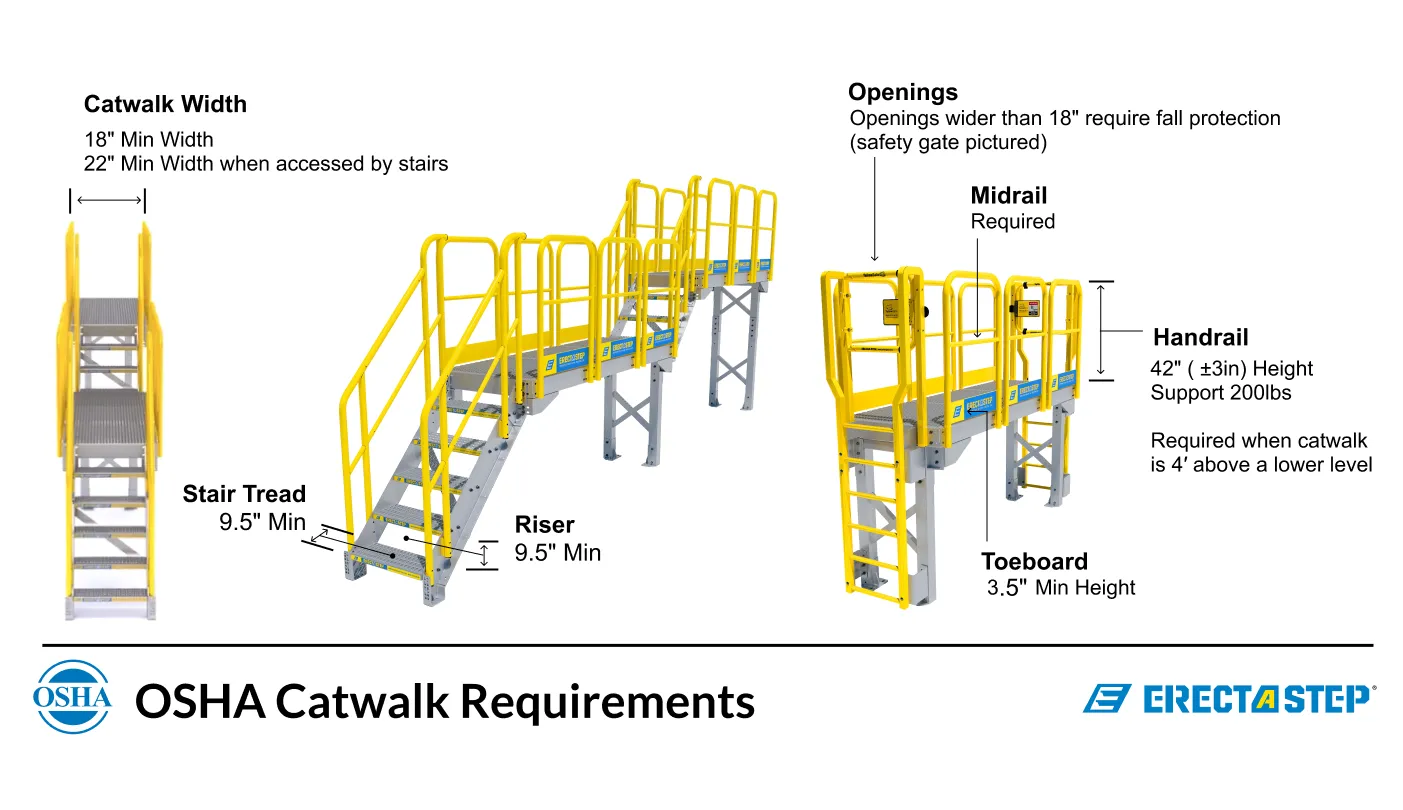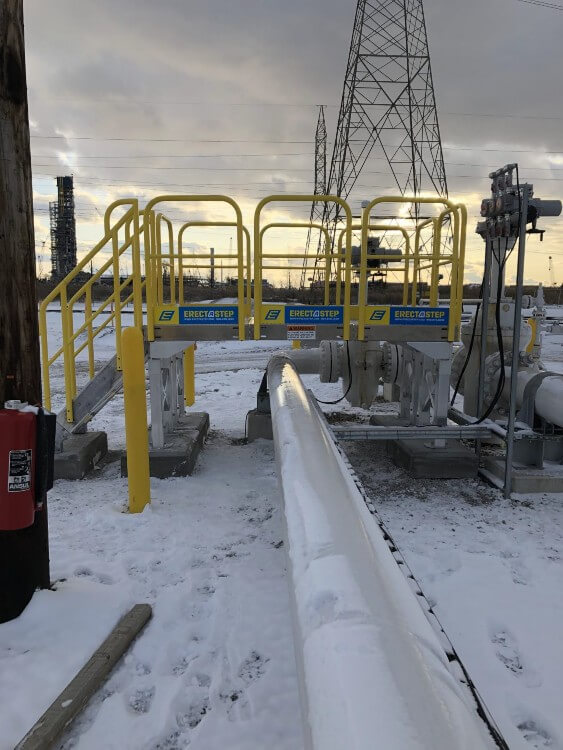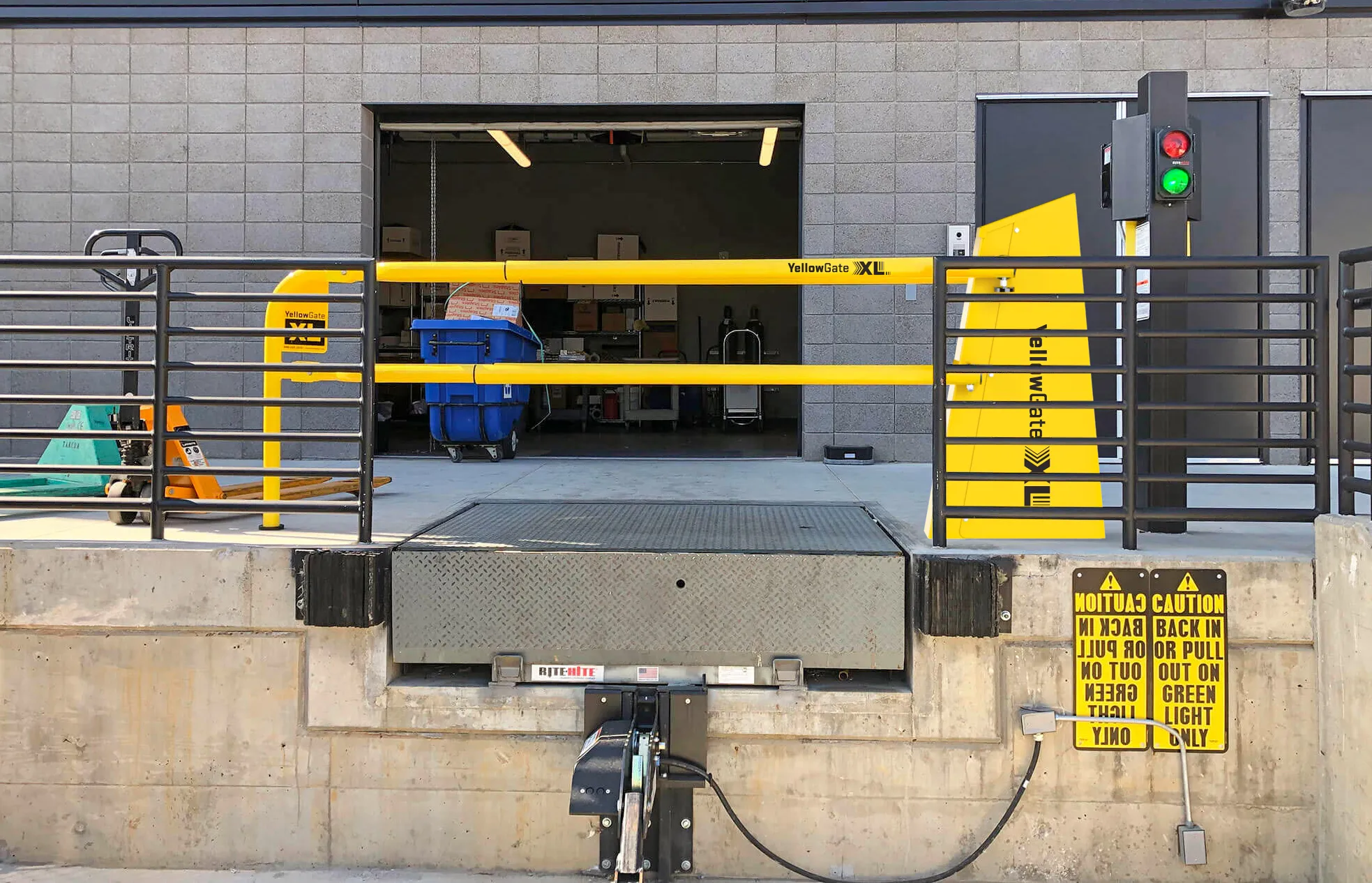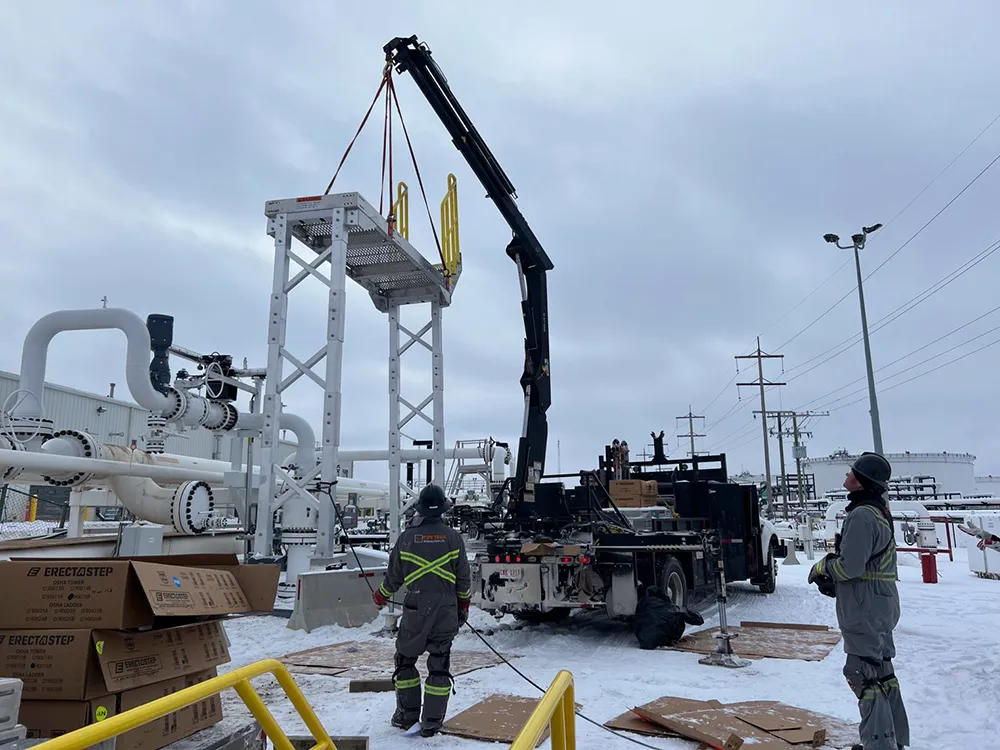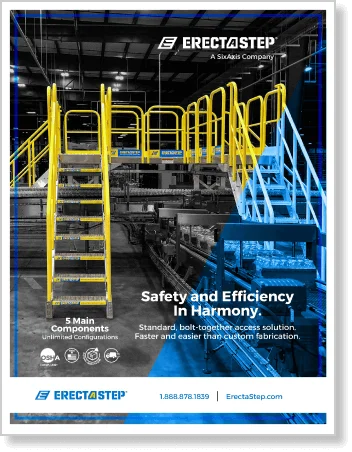An industrial catwalk is a narrow, elevated pathway or extended platform to ensure safe access to elevated work zones. Also referred to as runways, these structures enable workers to reach equipment, maintenance areas, and other challenging locations within a facility. To guarantee the safety of these systems, OSHA has outlined specific standards for catwalks in general industry.
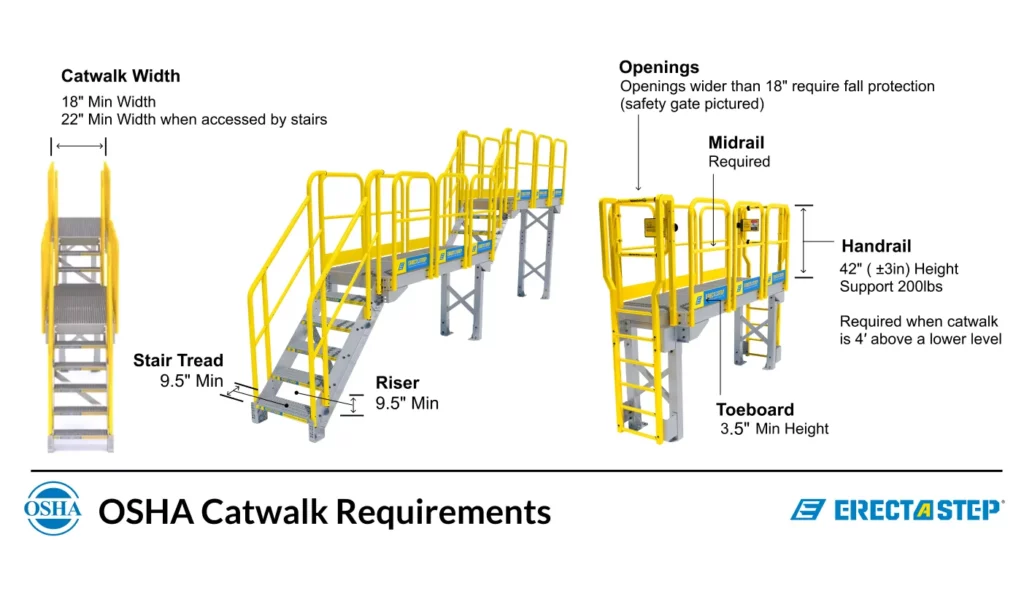
These guidelines cover aspects such as minimum width, load capacities, fall protection measures, and requirements for catwalk openings. Familiarity with these standards is crucial for creating a safe working environment for those operating and maintaining equipment on catwalks.
Key OSHA Catwalk Requirements
The primary goal of OSHA catwalk standards is to ensure safe working conditions for employees using catwalks. These standards, detailed in OSHA 29 CFR 1910 Subpart D – Walking-Working Surfaces, cover catwalk dimensions, load capacities, and fall protection measures.
- General Conditions for Walking-Working Surfaces (1910.22)
- Cleanliness and Order: Work areas, passageways, and surfaces must be kept clean, orderly, and sanitary.
- Hazard-Free: Surfaces must be free of hazards like sharp objects, loose boards, and spills.
- Load Support: Surfaces must support the maximum intended load.
- Safe Access: Employees must have safe means of access and egress.
- Regular Inspection and Maintenance: Walking-working surfaces must be inspected regularly and maintained in safe conditions. Hazardous conditions must be corrected or guarded until repairs are made.
- Stair Requirements for Catwalk Access
- Standard stairs should be used when regular travel between levels is necessary. If standard stairs are not feasible in tight spaces, non-standard stairs, such as ship stairs or spiral stairs, may be used.
- Riser and Tread Dimensions: Maximum riser height is 9.5 inches, and minimum tread depth is 9.5 inches.
- Handrail Requirements: Stairways with at least three treads and four risers must have a stair rail system.
- OSHA Catwalk Width Requirements
- Minimum width for a catwalk is 18 inches.
- If accessed by a stairway, the catwalk must be at least the width of the stairway, with a minimum of 22 inches. For catwalks accessed by IBC stairs, the minimum width is 36 inches.
- Load Requirements
- Catwalks must support the maximum intended load, including the weight of employees, equipment, and materials.
- Hole covers (such as safety gates) must support at least twice the maximum intended load.
- Handrail and Guardrail Systems
- Required for catwalks higher than 4 feet above a lower level.
- Guardrails must withstand a force of at least 200 pounds without deflecting to less than 39 inches above the walking surface.
- Handrails must be smooth to prevent injuries and snagging of clothing.
- View our handrail guide
- Toeboard Requirements
- Toeboards must be used to prevent objects from falling off elevated walkways. They must have a minimum vertical height of 3.5 inches and withstand a force of at least 50 pounds.
- Opening Requirements
- Openings in catwalks must be protected by fall protection systems if they pose a risk of falls.
Conclusion
Complying with OSHA’s catwalk requirements is crucial for maintaining a safe industrial environment. At ErectaStep, we offer a range of OSHA-compliant catwalk systems designed to meet these standards. Our modular design ensures easy assembly and adaptability to various industrial applications. For more information on our products and how they can help you maintain compliance, visit ErectaStep.com or contact our team for a consultation.
